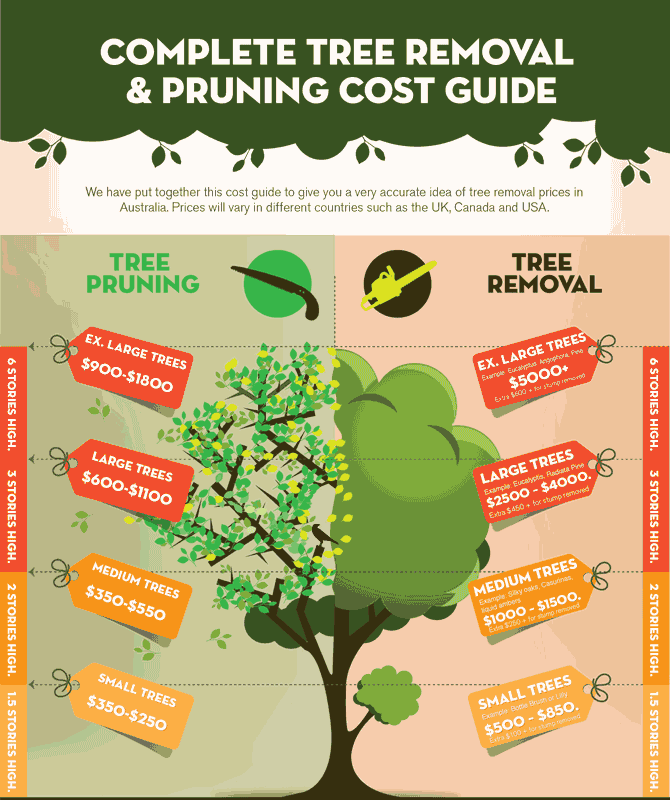Seasonal Tree Upkeep: Standards For Handling Trees Prior To And After They Are Eliminated
Seasonal Tree Upkeep: Standards For Handling Trees Prior To And After They Are Eliminated
Blog Article
Post By-
When it comes to seasonal tree treatment, making sure appropriate administration prior to and after removal can significantly affect the health and looks of your landscape. By comprehending the essential actions involved in analyzing tree wellness and getting ready for elimination, you can proactively safeguard your residential or commercial property. But what concerning the critical techniques to follow when the tree is gone? Remain tuned to uncover the crucial post-removal treatment measures that will certainly help you grow a successful and sustainable setting for your trees.
Pre-Removal Tree Treatment
Prior to addressing the elimination of a tree, it's essential to prioritize pre-removal tree treatment. Start by examining the tree's health and wellness and structural integrity. Search for indications of illness, pest problems, or any type of structural problems that might pose a safety and security threat during elimination. It's important to consult with a certified arborist to determine the very best course of action.
Pruning dead or unhealthy branches can stop further damages to the tree and make certain a smoother elimination procedure.
Additionally, think about the ecological influence of getting rid of the tree. Trees play an important duty in our environment, so planting a brand-new tree in an ideal place can aid offset any loss. Make tree service leads that you have the required authorizations and approvals for tree elimination, particularly if the tree is safeguarded by neighborhood policies.
Seasonal Upkeep Tips
Analyzing your tree's requirements throughout the year is necessary for its health and wellness and long life. To maintain your trees in leading condition, follow these seasonal maintenance ideas.
In springtime, focus on trimming to remove dead or damaged branches and urge brand-new development.
Summer season requires regular watering, especially throughout droughts, to ensure your tree stays hydrated.
As fall approaches, keep an eye out for very early signs of condition or anxiety, and consider using mulch to protect the origins throughout winter months.
In wintertime, beware when eliminating snow from branches to stop damage, and continue to monitor your tree's general health and wellness.
Keep in mind to readjust your treatment regular based upon the details requirements of your tree types and regional environment. By remaining alert and positive throughout the periods, you can assist your trees flourish and grow for several years to come.
Post-Removal Tree Treatment
To make certain the health and wellness of your landscape even after tree removal, proper post-removal treatment is essential. After a tree is removed, it's crucial to load the staying opening with topsoil and portable it to prevent settling. Read the Full Document will assist keep the integrity of the ground and protect against prospective hazards in the future.
Think about growing new plant life in place of the removed tree to bring back the equilibrium and appearances of your landscape. Regularly water the area to promote the development of brand-new plants and stop soil disintegration.
Evaluate the bordering trees for any kind of indications of disease or tension that may have been triggered by the removed tree. Keep an eye out for pests that could've been brought in to the previous tree and take safety nets to shield the continuing to be vegetation.
If needed, talk to a specialist arborist to assess the influence of the elimination on the surrounding trees and determine any type of extra care needed. By following these post-removal care steps, you can ensure the continued wellness and charm of your landscape.
Conclusion
Finally, positive seasonal tree care is crucial for preserving the wellness and balance of your landscape. By evaluating tree health and wellness, trimming, and consulting with an arborist prior to removal, you can guarantee a risk-free procedure. After removal, filling up the hole, growing new plant life, and regular watering will certainly promote new development and avoid disintegration. Bear in mind to examine surrounding trees for disease and seek additional care steps from an arborist to keep your landscape thriving.
